FAQ
General
A1: Please contact: reach@atiel.eu
A2: Please contact: reach@atiel.eu
A3: An ATIEL/ATC Generic Exposure Scenario (GES) is essentially a “mixture exposure scenario” developed for a classified lubricant. It is a mechanism for communicating safe use information for the lubricant’s constituent substances that are classified as hazardous, i.e. the mixture components reported in section 3 of the safety data sheet (SDS).
The GES consolidates the relevant Exposure Scenario (ES) information and presents it in a concise, understandable format that reflects the whole mixture. In doing so, it moves the responsibility for interpreting the often complex and confusing information received on to the formulator. Several GESs have been developed to cover the range of identified lubricant use groups for industrial and professional applications.
An additional benefit is that the attachment of a mixture GES, as an annex to the SDS, makes it clear to customers (and potentially REACH inspectors) that formulators have met their legal obligation to pass on safe use information.
This ATIEL/ATC approach also aims to ensure that consistent ES information for classified lubricant mixtures is passed to industrial and professional customers, regardless of whether a Downstream User (DU) Chemical Safety Assessment (CSR) has been completed or not.
Suppliers
A1: No, suppliers do not need to support all uses identified by downstream users that they consider inappropriate. However, suppliers are obligated to inform downstream users and ECHA of uses which they advise against for reasons of safety. Additionally, a supplier may choose not to cover a use e.g. because he considers the assessment as not feasible or economical. In this case, the supplier should inform the user of his/her decision and both parties should work together to identify a solution that is in line with legal obligations.
A2: For continued use in these applications you need to register the relevant uses as identified in the DUCC table.
General
A1: Formulators are legally obliged to pass on, to their industrial and professional customers, relevant information about safe use from the exposure scenarios (ES) of the constituent substances in mixtures. This obligation applies to those substances that are present at or above the concentration limit for reporting in Section 3 of the safety data sheet (SDS). These obligations for formulators arise from Articles 31 and 37 of REACH. There is no legal obligation under REACH to attach exposure scenarios for a mixture.
The Generic Exposure Scenarios (GES), developed by ATIEL/ATC, consolidate various ES information relating to the constituent substances of the mixture. This avoids the requirement for repeated updates of SDSs when new substance ESs are received by the formulator, as the need for the attached mixture GES to change is minimised. This GES approach has been developed over several years with input from experienced experts in the additive and lubricants industries.
If the formulator, as a Downstream User (DU), is required to prepare his own Chemical Safety Report (CSR) and ES for a constituent substance (according to REACH Article 37), this ES is required to be placed in an Annex to the SDS. This requirement may arise, for instance, if the substance ES for one of the mixture components does not cover the use of the substance in lubricants or does so in a way that the risk management measures or operational conditions are unrealistic.
A2: ECHA and industry guidance documents recognise that there are three ways for formulators to convey ES information for their mixture component substances, which must be done via the SDS for the mixture:
1. Attach the substance Exposure Scenarios (received from suppliers) for all relevant substances in the mixture.
2. Attach a “Mixture Exposure Scenario” which consolidates relevant ES information about the constituent substances.
3. Embed into the main body of the mixture SDS (in sections 7, 8 and/or 13) consolidated and relevant ES information about the constituent substances.
Note that none of the above options allows the formulator to avoid the need to pass on pertinent information to the customer.
End users have a legal duty to act on the information received. We strongly believe that the ATIEL/ATC approach (using option 2 above for classified mixtures) is the best option to take into account the composition, uses and supply chain of lubricant mixtures and can provide practical benefits for the end-user, for the following reasons:
• The combination and consolidation of substance ES information allows understandable, relevant & consistent information that properly reflect the whole mixture to be passed to customers in a succinct manner.
• It moves the responsibility for interpreting complicated and often contradictory information in substance ESs on to the formulator.
• The attachment of a mixture GES makes it clear (to customers and REACH inspectors) that the formulator has discharged its legal obligation to pass on information and the format allows this information to be easily found by the customer.
• The ATIEL/ATC approach ensures consistency in ES information passed to industrial and professional customers, regardless of whether a DU CSR has been completed or not.
In contrast, although option 1 looks like the easiest option, it may have the following drawbacks:
• Information from substance registrants is often confusing and received in different formats.
• There can be contradictions between the OCs and RMMs in the ESs for different substances in the same mixture which the formulator is best placed to resolve.
• The substance ES may have been developed based on its presence at a higher concentration than is actually used in the mixture, suggesting more stringent controls than are actually required.
• The information may generate a large document which could be difficult for end-users to interpret.
• The mixture SDS will need to be updated every time a new ES for a constituent substance that appears in Section 3 is received.
Option 3 (embedded information in the main body of the SDS) has the drawbacks that:
• It may not be clear to the customer or inspector if and how the legal duty to pass relevant ES information down the supply chain has been discharged by the formulator and acted upon by the customer.
• It may lengthen considerably the main body of the SDS (by embedding all the ES information) and not separate out ES information that is aimed at a potentially different target reader (e.g. industrial hygienist or environmental engineer vs. user of the mixture).
A3: The ATIEL/ATC GES’s have been designed to support the communication of safe use information for the hazardous components used in Lubricant formulations in the supply chain. The GESs have been prepared based on typical hazard classifications and typical component substance concentrations in finished products used in typical applications.
Therefore the controls identified within each GES are expected to be sufficient to address the risks associated with typical components. It is the expectation of the working group that most Lubricant products should fit within the boundary conditions of the relevant GES specified in this process. However, for products that do not fit into the boundary conditions matrix, it will be necessary to develop an exposure scenario specific to that product, and the GES provides a starting point.
The application of the GES process is not considered to require a DU CSA notification to ECHA. However, for products that do not fit into the boundary conditions matrix, it will be necessary to develop an exposure scenario specific to that product, and the GES provides a starting point.
Suppliers
A1: No, only identified uses allocated to group A (Formulation) will automatically be covered. Use in the other groups B to F, needs to be specifically identified. Those identified as ‘out of scope’ are adequately covered by other trade association, for example:
Fuel Additives – ATC
Process oils – CONCAWE
Asphalts – CONCAWE
Solvents – ESIG
Cleaning agents – AISE
Paints & coatings – CEPE
A2: Contact your supplier directly for further information. This information should not be sent directly to ATIEL or ATC.
A3: You should contact your supplier.
A4: The regulation allows downstream users to keep a use confidential. In these circumstances the downstream user should prepare his own Chemical Safety Assessment for that particular use and record it in a Chemical Safety Report – CSR (if the total amount used is 1 tonne/year or more). This CSR has to be made available to local REACH enforcement authorities on request and ECHA has to be notified. The notification to ECHA needs to indicate the name of the substance, the use for which an assessment has been carried out, and the identity of the supplier. ECHA should be notified within six months following the receipt of a registration number from your supplier that you have prepared your own CSA. There is no requirement to send the CSA you have prepared to ECHA.
Please also refer to Q & A number 9 as options 1 and 3 may also provide a solution for a downstream user in these circumstances.
A5: By definition assignment of use descriptors is subjective. The use descriptors assigned are based on the consensus view of the Lubricants and Fuel Additive Industry experts represented by the ATIEL ATC GES Working Group. If however you feel these PROCs and ERCs do not describe your life cycle step adequately please contact reach@atiel.eu with a reasoned argument as to your alternative suggestion. Please note however that having published this information already we will be reluctant to make minor changes at this late stage due to the complex nature of the supply chain.
A6: PROCs are used to describe worker exposure and so are not applicable to consumers. Consumer exposure is adequately described by Product Category.
A7: The selection of PROCs is by necessity subjective however this is the opinion of industry experts as represented by the ATIEL / ATC REACH GES Working Group. Group B includes filling and draining of containers and enclosed machinery (including engines). It is intended to cover the use of engine oils and similar within closed systems. Both PROC 17 and PROC 18 apply to open systems in which there is significant exposure potential. For this reason these PROCs are included in ATIEL Use Group F ‘use of lubricants in high energy open processes’. The default exposure estimates that are applied to these PROCs in the ECETOC TRA exposure modelling tool indicate that they do not apply to closed systems.
A8: See the website summary document for further explanation. The automotive example below may clarify this for you.
• Automotive manufacturing site = Industrial
• Car dealer / workshop or local garage = Professional
• D-I-Y Oil change = Consumer
A9: This should be done 12 months prior to the relevant registration deadline:
– 2010 – 30th November 2009
– 2013 – 31st May 2012
– 2018 – 31st May 2017
If your use is not covered by your supplier’s registration you have the following options:
1. Adapt your conditions of use to those operating conditions and risk management measures described in the supplier’s eSDS.
2. Perform your own chemical safety assessment for that particular use and record it in a Chemical Safety Report – CSR (if the total amount used is 1 tonne/year or more). This CSR has to be made available to local REACH enforcement authorities on request and ECHA has to be notified. The notification to ECHA needs to indicate the name of the substance, the use for which an assessment has been carried out, and the identity of the supplier. ECHA should be notified within six months following the receipt of a registration number from your supplier that you have prepared your own CSA. There is no requirement to send the CSA you have prepared to ECHA.
3. Switch to another supplier of the substance if that supplier covers your specific use in his eSDS.
A10: There are a number of legitimate reasons why some substances identified in Section 3 of a Safety Data Sheet are not listed on ECHA’s list of active SIEF’s. These include:
– The CAS number may relate to a substance which does not have a 2010 registration deadline in which case the SIEF may not yet be active.
– There is no legal requirement for a Lead Registrant to advise ECHA of their status and so the SIEF maybe active but ECHA have not been advised.
– As a result of REACH activities, especially substance sameness discussions, some pre-SIEFS split or merged resulting in changes to substance identities. If this is the case it will become clear when an updated Safety Data Sheet is issued by your supplier.
– Your supplier may be using generic identifiers in section 3 of the Safety Data Sheet which satisfies the product stewardship obligations to report hazardous substances but for REACH registration purposes more precise identifiers are required. If you remain concerned then you should contact your supplier directly for further information.
A11: It is unlikely that any DU CSA would need to be submitted if the ATIEL/ATC GES process is correctly applied i.e. provided DUs check that the exposure control conditions of the component raw materials of the mixture are no more severe than those described by ATIEL/ATC for the various Use Groups, then the conditions of use contained within the ATIEL/ATC GES can be considered to be consistent with those described for the components of the formulated product.
A12: A DU CSA will most likely be required in those circumstances that lie outside the conditions contained in the ATIEL GESs e.g. where the raw material exposure controls are more severe than those described by ATIEL or for endpoints not addressed by ATIEL (such as SVHCs). This is explained in the flowchart for the ATIEL process.
A13: The application of a metalworking fluid by the spray application of an aerosol creates a significant potential for worker exposure by inhalation and hence is most appropriately covered by Use Group C with PROC 7. However, it is considered that other forms of fluid applications where it does not lead to significant aerosol formation, are inherently much safer and should continue to be assigned to Use Group F with PROC 17.



